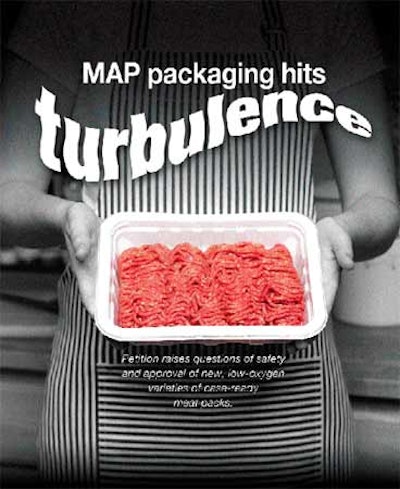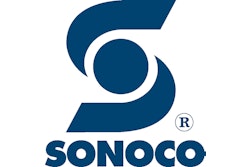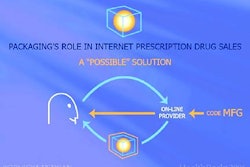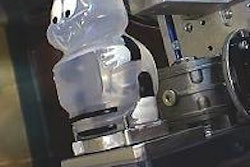Low-oxygen modified atmosphere packaging (MAP) is just taking off, but it has already hit some turbulence which could bring it crashing to the ground before it reaches cruising altitude.
Making the waves is Kalsec, Inc., a manufacturer of spices and other food ingredients. Kalsec filed a petition with the Food and Drug Administration (FDA) last November asking the agency to ban the use of carbon monoxide in low-oxygen MAP. The complaint landed at the agency just as companies like Tyson Foods, Cargill Meat Solutions, and Hormel Foods Corp. are planning broader use of the relatively new case-ready meat packaging technology.
The FDA is also taking a closer look at MAP used with fresh-cut fruits and produce. But here, there are no allegations that MAP has been improperly approved. Rather, the agency wants to insure via a just-released draft guidance document that produce companies are using MAP properly.
The threat to the use of low-oxygen MAP with case-ready meats is by far the more serious concern. Typically, a petition like the one submitted by Kalsec starts a 180-day period during which the FDA puts together information and ultimately makes a decision. Kalsec made two general points in its petition. First, that carbon monoxide is a color additive and therefore should be approved by the FDA, not used under a GRAS notification.
Second, it said that use of carbon monoxide gas in fresh meat packaging makes meat look fresher than it is and masks spoilage, deceiving consumers and jeopardizing their health. The 180-day clock will undoubtedly continue ticking beyond May because it will be stopped and restarted every time the FDA asks one of the parties to the issue for more information, and waits to receive that data. So there is no telling when the FDA will make a decision on the Kalsec petition.
Not just FDA
But the meat packaging issue has already leaped beyond the FDA’s political boundaries onto the floor of the House, where the issue came up on March 8 during debate over the National Uniformity for Food Act, which would allow the federal government to pre-empt state food labeling laws.
Rep. Bart Stupak (D-MI) held up pictures of two packages of meat while making the case for banning use of carbon monoxide in MAP. Rep. Joe Barton (R-TX), chairman of the House Energy and Commerce Committee, countered by saying the issue was already in the lap of the FDA so there was no need to legislate. Moreover, he said there were no safety problems with the packaging. Stupak lost the vote 170-254. But the issue is likely to come up again in the Senate.
The carbon-monoxide-in-meat-package story began to unfold in 2001 when the FDA did not object to a notification from Pactiv Corp. that it was about to sell a so-called low-oxygen MAP system that included CO at levels below 0.4 percent. High-oxygen MAP has been sold for a decade or more.
Pactiv’s low-oxygen innovation keeps meat fresher longer. Pactiv submitted that notification under an FDA program called Substances Generally Recognized as Safe (GRAS), which allows packaging suppliers to sell new systems without getting direct FDA approval as long as the components have already been deemed, in essence, acceptable by the FDA.
The low-oxygen players
Precept Foods, LLC subsequently filed a similar GRAS notification in January 2004. Precept is a joint venture between Cargill and Hormel.
That set the stage for the complaint for Kalsec, which sells extracts of rosemary and other natural essences that help block the oxidation that turns meat brown. Its products are used with high-oxygen MAP. Mark Klein, spokesman for Cargill, says the success in the marketplace of low-oxygen MAP would eliminate the use of high-oxygen MAP, and thus kill one of Kalsec’s businesses.
“The complaint landed at the agency just as companies like Tyson Foods, Cargill Meat Solutions, and Hormel Foods Corp. are planning broader use of the relatively new case-ready meat packaging technology.”
Klein estimates that perhaps 20 to 25% of supermarket ground beef is case-ready. Of that, about 10% is low-oxygen MAP with most of the rest in high oxygen MAP with the tiny remaining amount divided between vacuum packages and chub packaging.
Cargill, through Precept, is very interested in increasing the percentage of low-oxygen systems because it keeps meats fresher longer. But Klein emphasizes that Cargill sells “case-ready programs,” not simply case-ready meats, meaning an entire distribution line has to be set up and supermarket company buy-in must be achieved.
Klein says that low-oxygen packaging provides a marketing advantage, allowing supermarkets to keep display cases better stocked and allowing consumers to keep fresh meat longer in their refrigerators, which plays into “eat fresh” consumer trends. He says there is no advantage, in terms of packaging costs, with low- versus high-oxygen MAP.
Gary Mickelson, a spokesman for Tyson, says the company is using low-oxygen MAP in less than 1% of the company’s case ready production.
The other argument
As to Kalsec’s arguments against low-oxygen MAP, Precept’s comments in the docket state that the Kalsec complaint ignores an FDA decision in 1980 that additives such as nitrates “fix” color as opposed to “impart” color. So carbon monoxide is not a color additive, Precept maintains.
With regard to the safety issue, Precept says that proper use of MAP systems to package raw meat does not pose an elevated risk of C. botulinum and L. monocytogenes. “Moreover, even if pathogens are present in MAP systems including CO, appropriate controls are in place to provide the same assurances of safety available with other, well-accepted packaging systems,” the joint venture says.
Appropriate controls are also an issue in the FDA’s draft guidance document for producers of fresh-cut produce entitled “Guide to Minimize Microbial Food Safety Hazards of Fresh-cut Fruits and Vegetables.” It was published on March 1, and comments will be taken and digested by the FDA before it issues final guidance. Fresh cut fruits and produce are a rapidly expanding grocery segment; last October, the FDA issued a recall for certain pre-packaged Dole salad products because of an outbreak of E. coli O157:H7 in Minnesota.
“While reduced oxygen and elevated carbon dioxide retard the growth of spoilage microorganisms, the same gas conditions may provide growth opportunities for pathogenic microorganisms.”
The FDA draft guidance contains a section on packaging which singles out MAP. It warns: “While reduced oxygen and elevated carbon dioxide retard the growth of spoilage microorganisms such as Pseudomonas spp., the same gas conditions may provide growth opportunities for pathogenic microorganisms.
“At extremely low oxygen levels (less than 1%), anaerobic respiration can occur, resulting in tissue destruction that affects product quality and creating the potential for growth of foodborne pathogens such as Clostridium botulinum. It is generally believed, however, that fresh-cut produce will spoil before the toxin becomes a concern.”
Jeff Brandenburg, president of meat industry consultancy JSB Group, notes that MAP used by the fruit industry is different than MAP used by the meat industry. With fresh-cut fruits and vegetables the objective is to allow oxygen to enter the package so that the product can “breathe,” and allow carbon dioxide to escape. That calls for a gas-permeable film.
The trick there, Brandenburg says, is to find the exact “respiration rate” required for a particular product, which then determines the polymer engineering that must go on to select the correct packaging film. Brandenburg says that the large players such as Dole and ReadyPac are doing this correctly. But he adds, “There are a number of people out there worldwide who are not doing it right.”
See sidebar to this article: MORE ON THE USE OF CO
























